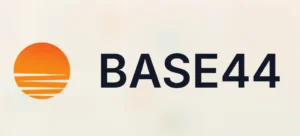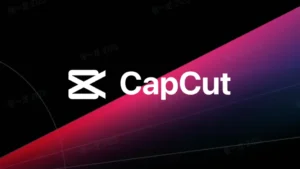Introduction
Artificial Intelligence is no longer confined to code and data — it’s now a creative partner. Among the most celebrated AI tools, MidJourney has quickly risen as a favorite for designers, marketers, and innovators who want to generate striking visuals with simple text prompts.
But here’s the catch: the difference between an amateur result and a professional-grade image often comes down to prompt engineering. By mastering how you phrase and structure prompts, you can transform MidJourney from a novelty tool into a serious design ally.
In this guide, we’ll dive deep into MidJourney prompt engineering, exploring its features, parameters, and advanced techniques. Whether you’re a beginner or a pro, you’ll learn how to consistently craft prompts that unlock the full power of AI art.
What Makes MidJourney Different?
MidJourney is not just another text-to-image generator. Unlike DALL·E or Stable Diffusion, it operates entirely within Discord, which makes collaboration and iteration simple. Its strengths include:
Stylisation Control; Adjust how artistic vs realistic outputs look.
Aspect Ratios: Generate images optimized for social media, presentations, or campaigns.
Chaos Parameter: Control randomness in results for either predictability or diversity.
Seed Control: Reproduce exact outputs for consistency across projects.
Professionals love MidJourney because it combines ease of use with powerful fine-tuning options, making it a go-to tool for rapid prototyping and storytelling.
The Art of Prompt Engineering
At its core, prompt engineering is about writing clear, structured instructions that AI can interpret consistently. Think of it as briefing a photographer or designer.
Building Blocks of a Prompt
Subject: The main object, person, or scene.
Style Modifiers: Words like “cyberpunk,” “cinematic,” or “oil painting.”
Technical Modifiers: Lighting, lens type, resolution details.
Parameters: MidJourney’s command-style settings such as:
--arfor aspect ratio--stylizefor artistic bias--chaosfor variation--qualityfor rendering depth
Why Iteration Matters
Rarely will your first attempt hit the mark. MidJourney thrives on iteration — using variations, remix mode, and upscaling to refine outputs until they meet your vision.
Advanced Prompting Techniques
If you want next-level results, you’ll need more than just descriptive words. Here are proven strategies:
Layering Concepts: Combine multiple ideas like “a futuristic product launch in cyberpunk Tokyo, shot on 35mm film.”
Image Prompts: Upload reference images to guide style or subject accuracy.
Prompt Weighting: Use double colons
::to emphasize or de-emphasize elements.Seeds for Consistency: Reuse seed numbers to maintain brand or project continuity.
Chaos Tuning: Low chaos gives controlled results, high chaos sparks unexpected creativity.
Remember: sometimes short, focused prompts outperform long ones. Overly detailed instructions can confuse the model.
Practical Applications for Professionals
MidJourney isn’t just for hobbyists — it’s transforming professional workflows:
Product Design: Quickly prototype visual concepts.
Marketing Campaigns: Storyboard ideas before investing in design resources.
Content Creation: Generate unique visuals for blogs, newsletters, and branding.
Innovation Workshops: Use AI images as thought-starters during brainstorming sessions.
When applied strategically, MidJourney becomes a time-saving, creativity-boosting tool that enhances professional output.
FAQs About MidJourney and Prompt Engineering
1. What is MidJourney prompt engineering?
Prompt engineering is the practice of writing structured instructions to guide MidJourney in creating consistent, high-quality visuals.
2. How can I write the best MidJourney prompts?
Focus on the subject, style, technical details, and MidJourney parameters. Start simple, then iterate by refining details and adjusting settings.
3. What’s the role of aspect ratios in MidJourney?
Aspect ratios (--ar) determine the shape of your image. For example, --ar 16:9 works well for YouTube thumbnails, while --ar 4:5 suits Instagram posts.
4. Can I use my own images as prompts?
Yes, MidJourney allows you to upload images as references, letting the AI blend your input with text prompts for greater accuracy.
5. What’s the difference between chaos and seed parameters?
Chaos introduces randomness, while seed ensures repeatability. Use chaos when experimenting, and seeds when consistency matters.
6. Is MidJourney suitable for professionals?
Absolutely. Marketers, designers, and entrepreneurs use MidJourney for prototyping, content generation, and creative brainstorming.
Conclusion
Mastering MidJourney isn’t just about knowing commands — it’s about learning the art of structured creativity. With prompt engineering, you can elevate your results from random images to strategic, professional-grade visuals.
As AI creativity matures, those who learn how to speak the “language of prompts” will gain a real competitive edge. So start experimenting, refine your prompts, and let MidJourney become your creative partner in innovation.
Further Reading
- MidJourney Official Documentation – Controls & Parameters — The section of MidJourney docs that covers key parameters like –stylize, –chaos, –no, etc., which directly relate to how you engineer prompts.
- MidJourney Prompt Basics — Official page explaining very clearly what a prompt is, how simple or complex it can be, with guidance on getting started.
- MidJourney Version History & Legacy Features — Insights into how different versions have changed prompt responsiveness, image quality, and style behaviour. Important for understanding how prompt engineering expectations shift with model updates.
- MidJourney Getting Started Guide — For novices or those newer to the tool: setting up, how the Discord/web experience works, organising your creations, etc.
- LearnPrompting.org – MidJourney Prompting Guide — A well-regarded external guide covering advanced prompting techniques, multi-prompt strategy, and how to shape prompts for better visual control.



